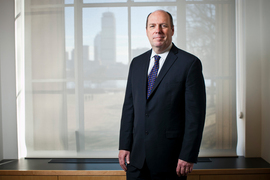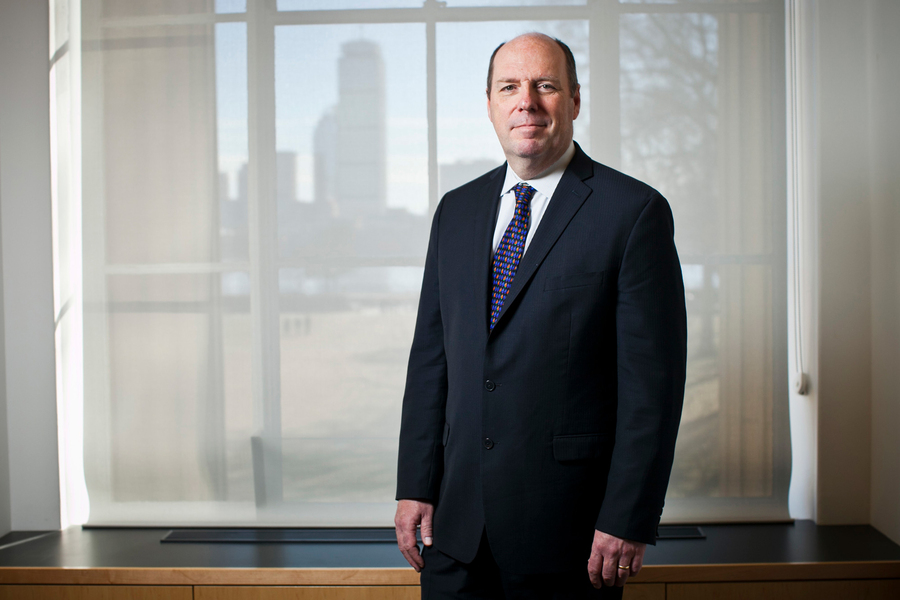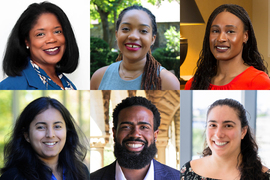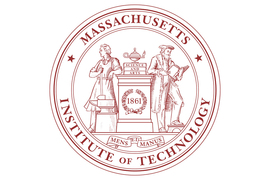Work on MIT’s Strategic Action Plan for Diversity, Equity, and Inclusion started last fall, and the plan’s first draft was released this past March. Powered by inputs and feedback from three dozen community engagement sessions and a steady stream of email responses from students, staff, faculty, postdocs, alumni, and others, the plan is being revised and updated over the summer with hopes for a fall release. The development of the strategic plan is being led by Institute Community and Equity Officer John Dozier, along with Deputy ICEO Maryanne Kirkbride and Associate Provost Tim Jamison.
In a conversation prepared for MIT News, Provost Martin Schmidt described the plan’s importance to the Institute, the processes that will lead to its successful implementation, and MIT’s generational opportunity for change.
Q: What are the opportunities and challenges you face as provost in trying to advance a strategic plan for diversity, equity, and inclusion at MIT?
A: We are living through a transformational time — from increasing political polarization; to the Covid-19 pandemic; to the deep changes we are seeing in how our society talks about race, gender, and other identity issues. In the past, some might have considered these issues as happening “outside” our campus. We know today all of these challenges, and others, are landing squarely inside the MIT community. Fundamentally, I want to make sure we recognize the moment we’re in and work to build a community that is greater than the sum of its parts.
The strategic action plan is MIT’s opportunity to define much of the work we need to do. It’s a platform for building a rich network that’s mutually supportive. It’s an opportunity to amplify and propagate good ideas and practices across the Institute. We need to make sure good ideas spread, and to share lessons learned about things that don’t work.
We all know MIT is decentralized. Sometimes collaboration doesn’t happen naturally. However, there is already a huge range of productive interdepartmental and interdisciplinary relationships on our campus, are they’re generating tremendous results. If we capture and redirect some of this energy and build a connected network of diversity, equity, and inclusion activities at MIT, it will elevate everything we do.
The strategic plan is also a pathway to building a network of accountability. Everyone — by which I mean every organizational unit at the Institute — needs a plan for its community. MIT has a range of distinct cultures and communities. What the strategic plan will give us is a unifying framework, a set of principles, and the tools to make sure that local-area planning is well thought out and fits together — that they, too, add up to a whole greater than the parts. And across this framework, of course, we’re going to measure and track the success of everything we do.
Finally, we need to be smart about resource allocation. MIT has already made crucial investments in diversity, equity, and inclusion, such as the hiring of six new assistant deans for diversity in the schools and the college. We need to build on those investments. We also need to be prepared to examine legacy programs and determine if they suit current needs and priorities. Tracking the effectiveness of the investments we’ve made is as important as making new ones.
Q: How do you think the plan will impact the campus community?
A: A more diverse and inclusive community leads to better outcomes, no matter how you measure them. It will also lead to a better and more impactful MIT. We want this plan to cultivate and promote an environment where everyone feels empowered to generate better ideas, to make more informed decisions, and to pursue the opportunities they are passionate about. This isn’t just for students, or faculty, or staff, or our postdocs — this plan is for every person who is a part of the MIT community.
This is why we need local planning. For the strategic plan to reach effectively across MIT functional areas — from staff professional development, to graduate student admissions, to faculty recruitment, to our work with external partners — it must be informed by and connected with the expertise in those areas. This level of detail and engagement makes the process complicated, but I can’t see an alternative, at least not one that will actually work and get us where we want to be.
Q: What do you think will be the most important outcome of the plan?
A: I think there are internal and external dimensions to this.
Internally, I don’t think MIT has ever done something this unifying before. We need to develop some new capabilities and some new muscles around collaboration and coordination. The Provost’s Office is among the few places at MIT that is sufficiently central to help move the strategic plan forward. And we need partners — the chancellor, Human Resources, the vice president for research, and others — if we’re going to get everyone at MIT rowing in the same direction. Plus, those of us in more central roles need active and meaningful participation from the members of our communities in order to accomplish our goals.
The old saying that no organization ever centralized its way out of a problem applies here. Centralization is not our goal. We need to provide enough central support to make the pieces come together. I think that’s new and different for MIT.
Externally, I am always humbled and surprised by how much people pay attention to MIT. Our peer schools, especially STEM-oriented universities, often look to us as they reflect on what they’re doing. There are some widely acknowledged challenges when it comes to diversity in STEM fields. We have a generational opportunity to address these challenges. We might not be doing any better than our peers, but we are a place where people look to for cues and models. If we can help propel the community of STEM institutions — through collaboration and sharing of best practices — MIT can propel change beyond our campus.









